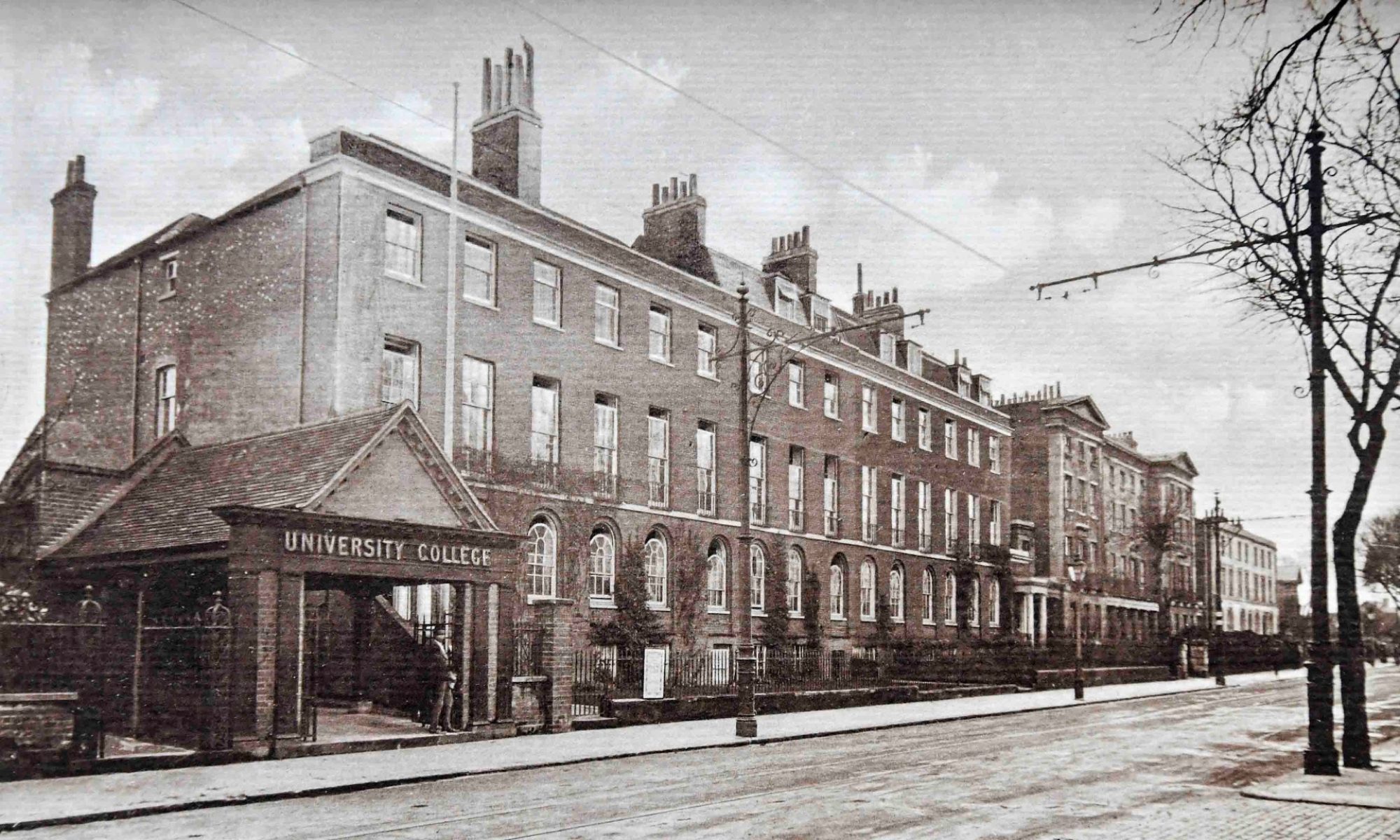My previous post about the Censor of Women Students noted that Mary Bolam took up the position in 1901. It was not until 1906, however, that a male ‘Censor of Discipline’ was mentioned in the University College Calendar, although W. M Childs appears to have taken on the role in the Extension College and Reading College. I assume that he was responsible for the enforcement of the college’s rules and regulations.
It may be no coincidence that the creation of the post, possibly in imitation of Oxford University, took place in the same year that W. M. Childs and a small group of senior academics began plotting the long journey towards university status.
The position was occupied by Herbert Knapman who had been appointed to the Mathematics Department as Assistant Lecturer in 1903 and promoted to Lecturer in Geometry the following year. Despite being acknowledged as a brilliant academic, Knapman devoted himself to administrative duties rather than research and publication. As this profile from the Student Handbook shows, he combined the roles of Tutorial Secretary and Censor of Discipline:

From 1927 he supplemented these responsibilities with the position of University Registrar until his death in 1932.
Knapman was a close ally of the Principal, W. M. Childs, and one of the original band of six academics who from 1906 helped to develop his vision of ‘making a university’, In doing so he served as secretary to committees that investigated the feasibility of becoming a university institution (the Policy Committee of 1909-11) and the committee that prepared the College for university status.
From the start, Childs was impressed by Knapman’s efficiency:
‘The appointment of Herbert Knapman as Tutorial Secretary in 1906 meant that henceforth a mass of academic detail would be handled with a precision and promptitude never more valuable than in a period of growth and inquiry.‘ (W. M. Childs, 1933, p. 124)
A glowing tribute can also be found in Hubert Childs’s biography of his father, referring to Knapman’s ‘remarkable ability as an organiser’, his reticence, tirelessness, loyalty, humour and public spirit.

Like Lucy Ashcroft, Knapman is mentioned by name in Reading’s Charter of Incorporation of 1926. On his death in 1932 his obituary was published in the journal Nature.
POST SCRIPT
Knapman must have been something of an amateur ornithologist. He was the one who compiled the list of 30 bird species spotted on the London Road Campus that appears in W. M. Childs’s memoir (p. 52).
THE GRADUATION PROCESSION, 6 JULY 1929

From left to right: Prof H. A. D. Neville (Agricultural Chemistry), Herbert Knapman (Registrar), Leonard G. Sutton (Vice-President of Council), W. G. de Burgh (Deputy Vice-Chancellor), Alfred Palmer (President of Council), the Mace-Bearer, William Macbride Childs (Vice-Chancellor).
According to Holt, This was Childs’s last degree ceremony.
SOURCES
Childs, H. (1976). W. M. Childs: an account of his life and work. Published privately by the author.
Childs, W. M. (1933). Making a university: an account of the university movement at Reading. London: J. M. Dent & Sons Ltd.
Holt, J. C. (1977). The University of Reading: the first fifty years. Reading: University of Reading Press.
N., E. H. (1932). Mr. Herbert Knapman. Nature 130, 426–427.
University College Reading, Student Handbook, 1908-09.
University of Reading. Charter of Incorporation, 17 March 1926.
University of Reading, Special Collections. Academic Processions, MS 5305.



